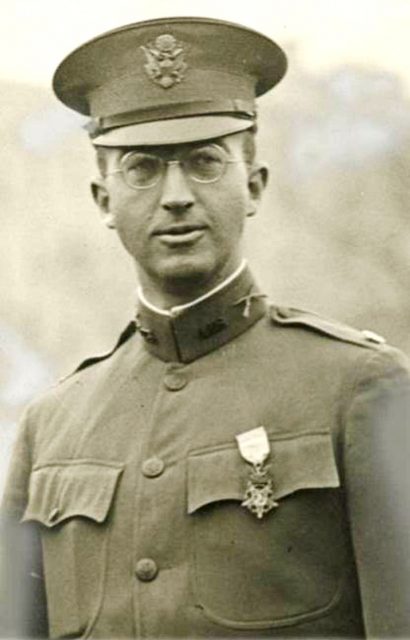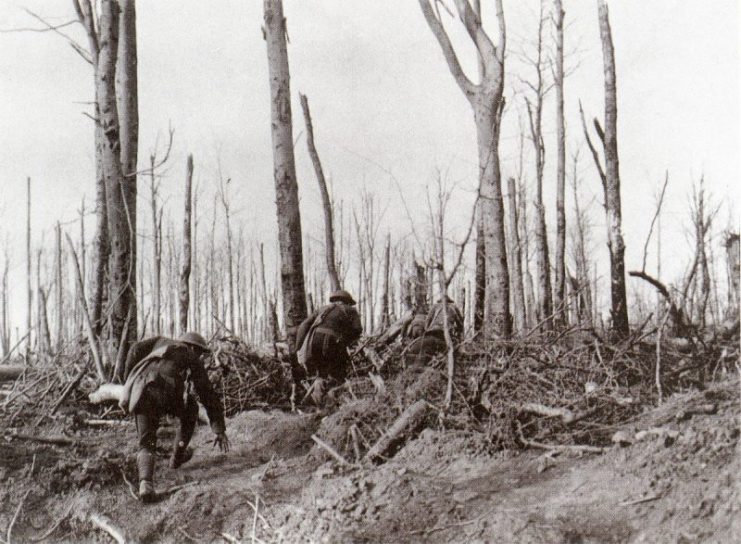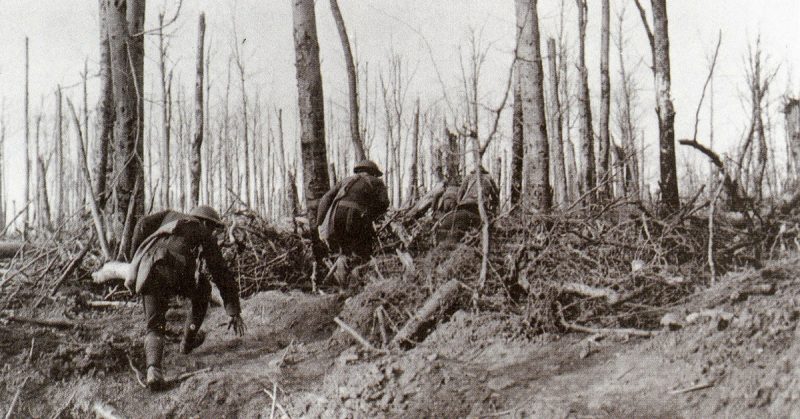The Meuse-Argonne Offensive was one of the most significant military operations of WWI. It was the final push by the Allies on the Western Front with the intention of forcing the Germans to capitulate after four years of fierce fighting. The ensuing battle lasted from September 26 up until the armistice was signed on November 11, 1918.
The offensive included a large contingent of the American Expeditionary Force. It is the second bloodiest battle in the history of the US Army regarding casualties – only Normandy was higher.
During the battle, one battalion stood out from the others displaying bravery, endurance, and determination. The nine companies of the United States 77th Division, which later became known as The Lost Battalion, became stranded in the Argonne forest on October 2, 1918. For almost a week they suffered heavy casualties and multiple counterattacks.
Of the 554 men involved in the operation of taking and holding their positions in the Argonne forest, only 194 returned unscathed. The 77th consisted mainly of men from New York and were nicknamed the Liberty Division due to their emblem representing the Statue of Liberty.
The men were led by Major Charles White Whittlesey whose orders were explicit ― no retreat and no surrender. The same applied to the rest of the American troops participating in the Meuse-Argonne offensive.
The operation commenced on October 1. Whittlesey received orders to advance towards the enemy positions in the Argonne, together with a support battalion led by Captain George McMurtry. At the same time, a French division was to advance, covering the left flank of the 77th, while their right flank was to be covered by another American division.

Their objectives included capturing several strategic points and assuming control of the Binarville-La Viergette road as well as a rail line running parallel to the road. After initial success, they dug in and waited to resume their task the following morning.
The foggy dawn of October 2 marked the beginning of their risky endeavor, as the men of the 77th received instructions to proceed with the capture of the strategically valuable road. Significantly, they were also ordered to take and hold the infamous Hill 138, a standpoint of utmost importance for further advances.
Whittlesey’s men determined the safest route to reach the hilltop, and the battalion proceeded. Pushing their way through to Hill 138, the men from the Liberty Division had to face a double line of German trenches, which was no easy task.
Despite the difficulty, the hill was taken. But although Whittlesey’s troops were where they were supposed to be, it appeared no one else was. Their flanks were supposed to be covered by the American battalion and the French, but it seemed only the 77th had succeeded.
“Either they had broken through the line as well and reached their objective over there, or they had been licked and fallen back. The former would be good news for the 308th … The latter, however, was unthinkable; orders forbade it…”
According to Robert Laplander, author of the book Finding the Lost Battalion, that is what Whittlesey said when he reached the hilltop.

The men realized that they were cut off and surrounded by the Germans. Whittlesey immediately ordered his troops to dig in and make a protective pocket.
They formed a circle and waited for all hell to break loose. In the meantime, runners sent both from the hilltop and from the other American units failed to reach their destinations, as they were killed or captured by the surrounding Germans. It was a death trap. The men were in cramped foxholes which were too close to each other making them perfect targets for mortars and snipers.
Hill 205 on their left was still occupied by Germans, while the ravine to their right began swarming with enemy activity. However, there was no immediate confrontation, partly because the Germans were not sure how many Americans were stranded on the hilltop.
Although the carnage had been delayed, on the afternoon of October 3, attacks commenced from all sides. One of the officers, Captain Holderman, launched a charge on the advancing Germans but failed to breakthrough.
What followed was a devastating mortar assault, but the Americans stood their ground as grenades fell all around them, blowing many men to pieces. By then it was clear that no runners could break through, no ammunition or food could be supplied, and no wounded could be evacuated. Also, water was scarce, as their only source was a nearby spring, covered by enemy snipers.
Desperate, they turned to carrier pigeons to deliver their cry for help but the following day proved to be the darkest in Liberty Division’s history. A pigeon had successfully provided coordinates to the US artillery battery, but – inexplicably – when the guns started they pounded the Lost Battalion!

Whittlesey could not believe his eyes ― their own artillery was now pounding his men who had stood firmly against the swarms of German attackers. With their last pigeon, he sent a desperate plea:
WE ARE ALONG THE ROAD PARALLEL [sic] 276.4. OUR ARTILLERY IS DROPPING A BARRAGE DIRECTLY ON US. FOR HEAVENS SAKE STOP IT.
Luckily, the message reached its destination, although, allegedly, a shell dropped just before the pigeon took off, blowing several soldiers to smithereens. Over the next few days, from October 5 to 8, the attacks varied in intensity.
On one occasion, an 18-year-old runner, captured earlier by the Germans, was sent to the hill to deliver an offer of surrender. The note showed tremendous respect towards the doughboys holding Hill 138:
“The suffering of your wounded men can be heard over here in German lines, and we are appealing to your humane sentiments to stop…. please treat (the messenger) as an honorable man. He is quite a soldier. We envy you.”
A reply was never sent, as Major Whittlesey refused to think of surrender, assured that relief was on its way.
Indeed it was. On October 8, around 15:00 hours, American forces managed to break through the blockade. What they saw that day on Hill 138 made their stomachs turn ― the field of glory is never a pretty sight.
Corpses were piled up leading to the hilltop, while the triumphant 77th resembled an army of shadows. The men were exhausted, surrounded by dead and wounded, without food and water, and numbering the last of their bullets.
Once relieved of duty, the troops were celebrated as true heroes of the war. Charles Whittlesey was immediately promoted to Lieutenant-Colonel and awarded the Medal of Honor as were the other officers present during the siege.
Even though Whittlesey’s act received the honor it deserved, he apparently never recovered from the trauma of the wretched hilltop battle. In 1921, he disappeared from the ship he was traveling on, presumably overboard and it was concluded he had committed suicide.
